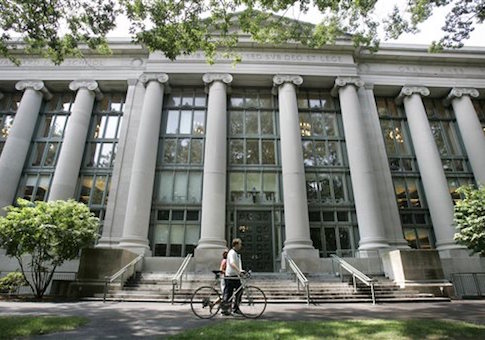A higher education expert who helped Forbes develop its U.S. university rating system criticized what he termed the politically correct "diversity component" in the ranking co-produced annually by the Wall Street Journal and Times Higher Education.
Richard Vedder—director of a higher education think tank, the Center for College Affordability and Productivity—took issue with the "environmental" factor that comprises 10 percent of a college's WSJ/THE score, which considers the number of international students at a university, and the racial and ethnic diversity of the campus's student body and staff.
"While I believe having students of diverse backgrounds is useful in promoting a full learning experience, there are few American schools that do not largely achieve that already (although the number of poor students at top schools is typically relatively small). The WSJ diversity component to me is not measuring quality but rather is catering to political correct racist instincts (and I bet a majority of the WSJ's editorial board, not involved in this undertaking, would agree)," wrote Vedder at Minding the Campus.
"Campus tolerance and support for a diversity of ideas, of course, is what is really important, and it is not considered in the rankings (although it would be difficult although not impossible to do so)," continued Vedder, an adjunct scholar at the conservative American Enterprise Institute in D.C. and an economics professor at Ohio University.
A school that capitalized on the environmental factor could spike its status on the list by "replacing white students with those from presumptively better races," or its American students with those from Middle Eastern countries, according to Vedder.
Seven of the top 20 schools in the environment category are state schools in California and New York.
The professor takes issue with the ranking's "resources" factor as well, linking how highly a university scores in this category with the fullness of a its coffers.
"[I]f a school is wealthy, it is better, since rich or high tuition schools can buy faculty and even research. Quality is measured here by inputs, not outputs," writes Vedder.
Having been involved in shaping the Forbes university ratings since its inauguration in 2008, Vedder notes that there is "monotonous stability" to college rankings. From list to list, the top 10 schools consists of some variation of Harvard-Yale-Princeton.
Harvard takes number one, Yale sixth, and Princeton ninth on this year's WSJ/THE list. The remainder of the top 10 is fleshed out by other near-constants, including the Massachusetts Institute of Technology, Stanford, Columbia, Duke, and the California Institute of Technology.
Vedder laments that this static "dramatically demonstrate[s] how rarely healthy and innovative Schumpeterian 'creative destruction' comes to higher education."
The WSJ/THE list claims to emphasize graduates' financial outcomes and other practical considerations when evaluating a school.
